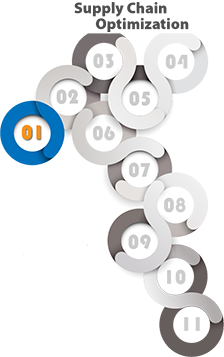July 18, 2013 | Supply Chain Management
How Effective is Your Supply Chain?
|
Written by: Terry Weiner The following post is #1 of a series and highlights the requirements of an effective supply chain. This series of posts will provide an overview of the Supply Chain Optimization process and preview some of the concepts and tools that are part of the Manufacturing Extension Partnership (MEP) Supply Chain Optimization Initiative. Click here to read part #2.
|
|
 How Effective is Your Supply Chain?
How Effective is Your Supply Chain?
- When was the last time you really looked at how effectively your supply chain is performing? I mean, really looked into all of the aspects of cost, performance, quality, and value.
- Is the supply chain performing to the specifications of your Supply Chain Strategy?
- Do you even have a Supply Chain Strategy, and if so, is it in alignment with your corporate strategy?
- Are your suppliers aware of the supply chain strategy and do they know what their part is in helping to achieve it?
This series of posts will provide an overview of the Supply Chain Optimization process and preview some of the concepts and tools that are part of the Manufacturing Extension Partnership (MEP) Supply Chain Optimization Initiative.
The Optimization Initiative is based on establishing a comprehensive view of the supply chain and improving the visibility and responsiveness through all tiers supporting the supply chain. It is designed to be scalable, to leverage and coordinate throughput improvements at any level of the supply chain, whether it is supporting a small to mid-sized contract manufacturer or a large multi-national OEM, the concepts and tools are applicable.
An optimized high performing supply chain requires management attention to
-
Alignment - The supply chain strategy
 needs to actively align and support the corporate goals of future growth, innovation and sustainability.
needs to actively align and support the corporate goals of future growth, innovation and sustainability. -
Value - The supply chain strategy should identify suppliers who will assist us in achieving our future goals through collaboration and providing a means of growing our mutual businesses through sharing of ideas, capabilities and capacity.
-
Managing Risk – A well thought out Risk Management Plan is necessary to prevent supply chain interruptions and unexpected events that would render our product uncompetitive, unavailable, or unattractive to the marketplace.
-
Comprehensive View – The performance of the entire supply chain must be examined in order to identify current and potential future constraints. If we only look at suppliers who represent current bottlenecks we will fail to recognize potential future constraints.
-
Metrics – We can’t improve what we don’t measure. If we don’t measure the “right things” the problems will persist.
What's next?
In future posts, we will look at the following components of the Supply Chain Optimization Initiative - Link by Link:
Terry is a Senior Consultant with California Manufacturing Technology Consulting® (CMTC). Terry has over 20 years experience in process improvements, quality management implementation and supply chain optimization.










